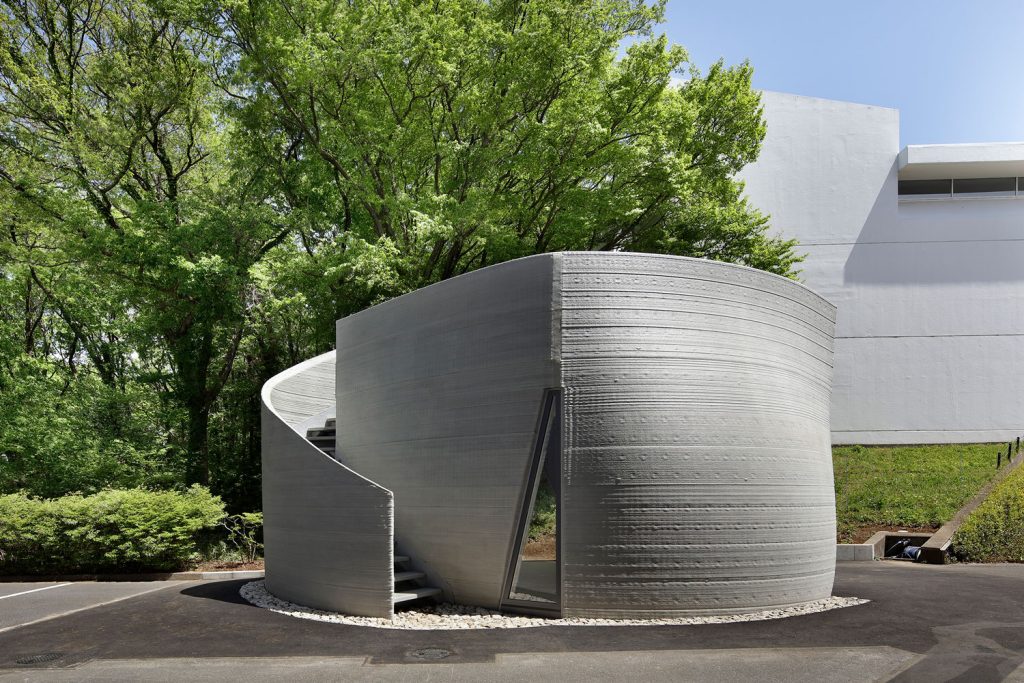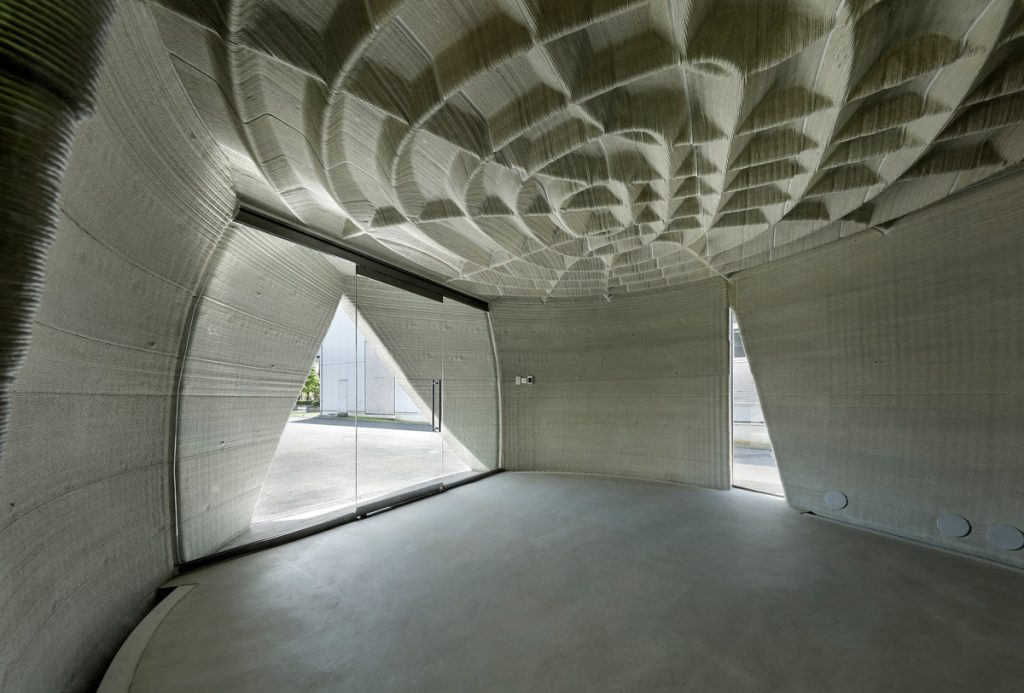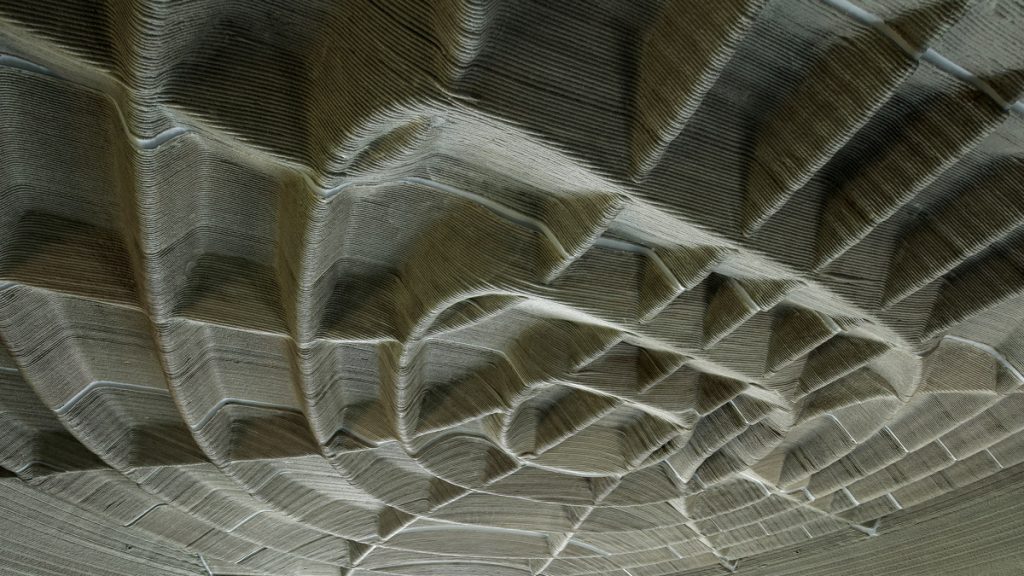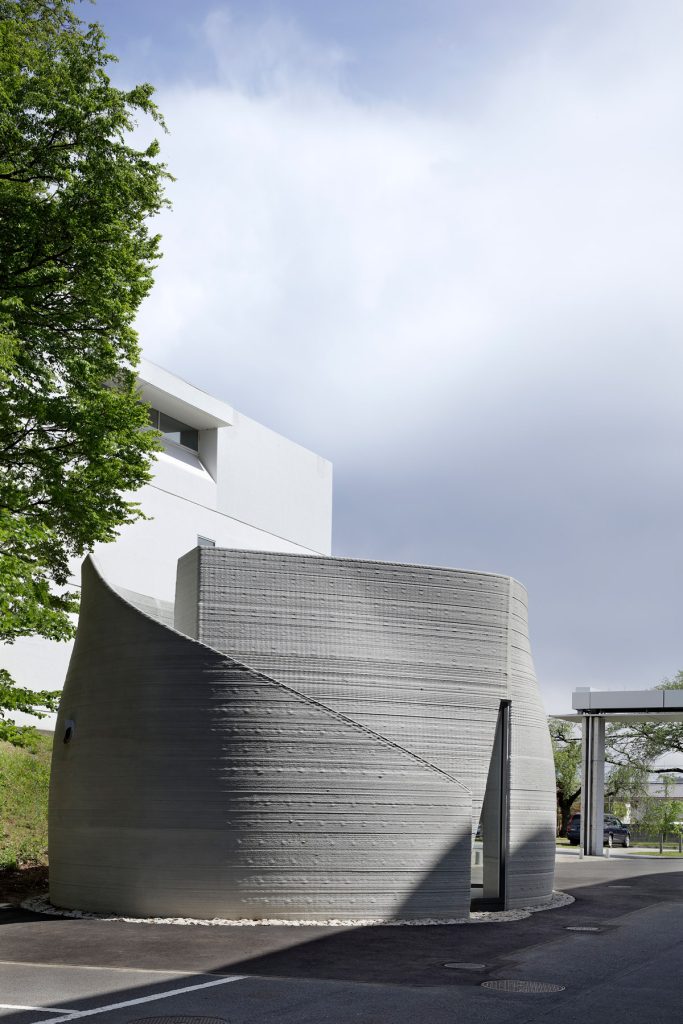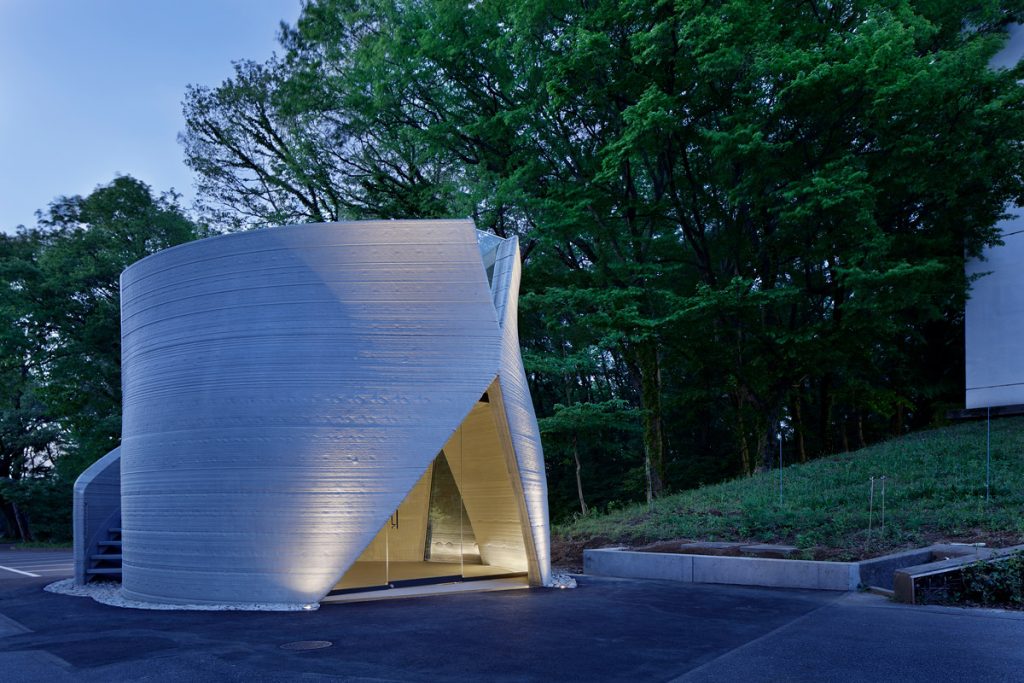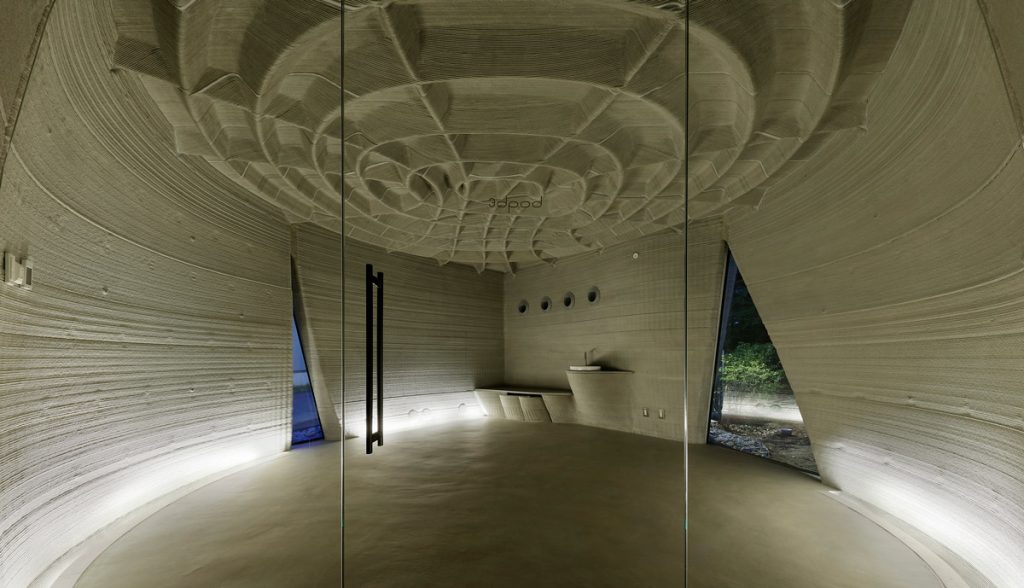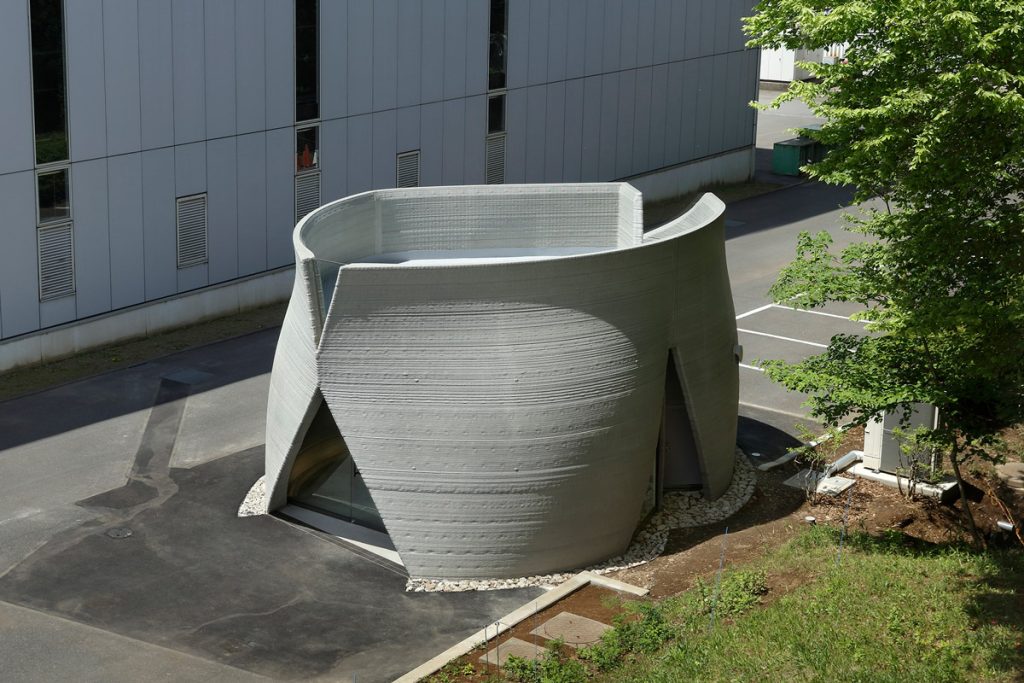
Obayashi, one of the largest general contractors in Japan, founded in 1892, has completed “3dpod”, the first 3D-printed and earthquake-proof building in the country to receive ministerial certification and a building permit. This public demonstration facility was constructed to test the structural and environmental durability of 3d printing and encourage its further technological development.
In earthquake-prone Japan it is especially difficult to use architectural 3D printing. Due to restrictions in building regulations, the technology has only been used in small, non-habitable structures and civil engineering. It was important to the project that it met the local building regulations without using conventional reinforcement.
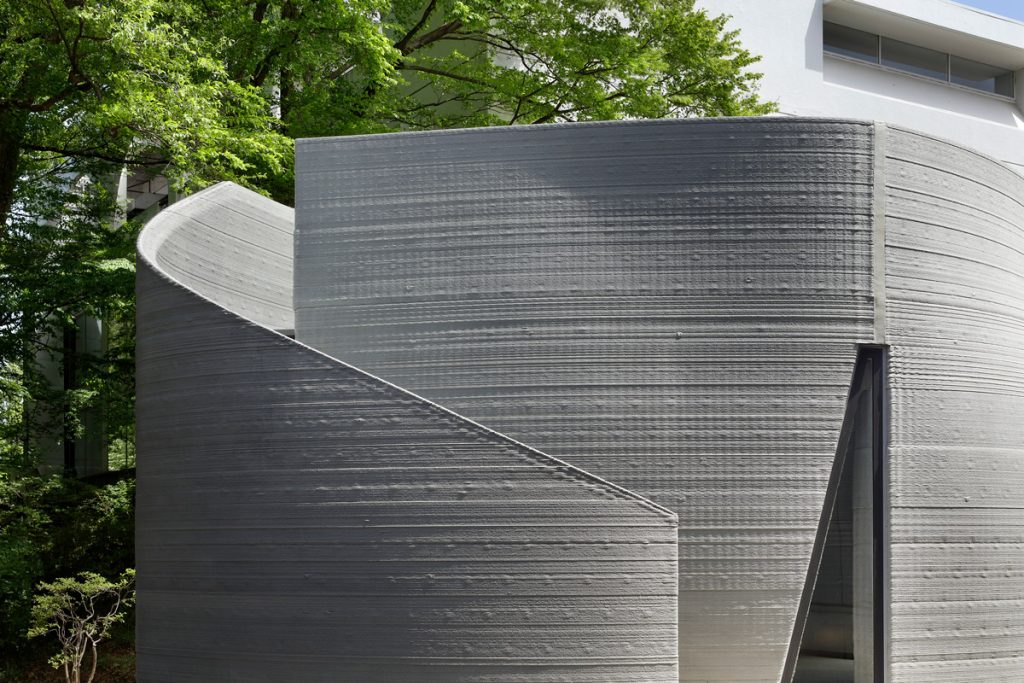
3dpod is printed with a special mortar, acting both as an internal and external finishing surface as well as the framework for the load-bearing structure, made of a high-strength concrete reinforced with steel fibers, called “SLIM-Crete®”. The construction does not need to be reinforced with steel bars or frames.
The pod shape was created by maximising the relationship between the interior volume and the wall surface area. This is achieved with the minimum amount of materials, considering the printing limitations and site constraints.
Multi-layered walls combine load bearing structure, cavities for insulation materials, routing of equipment, and radiant heating and cooling to provide the habitability level of a standard building. The construction process can be shortened by printing and designing these systems all at once.
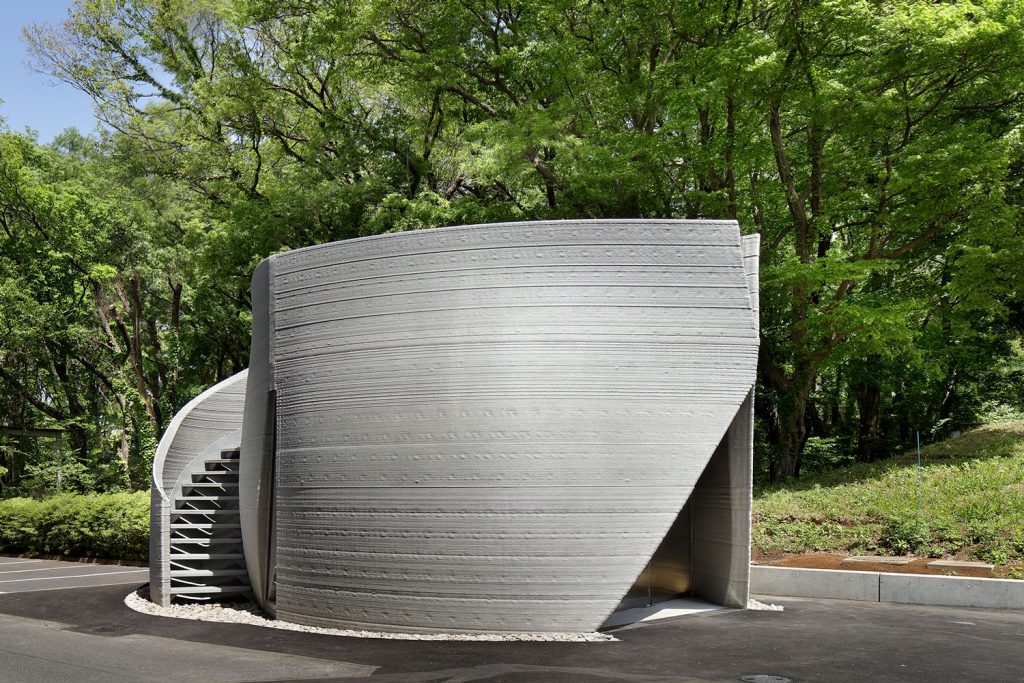
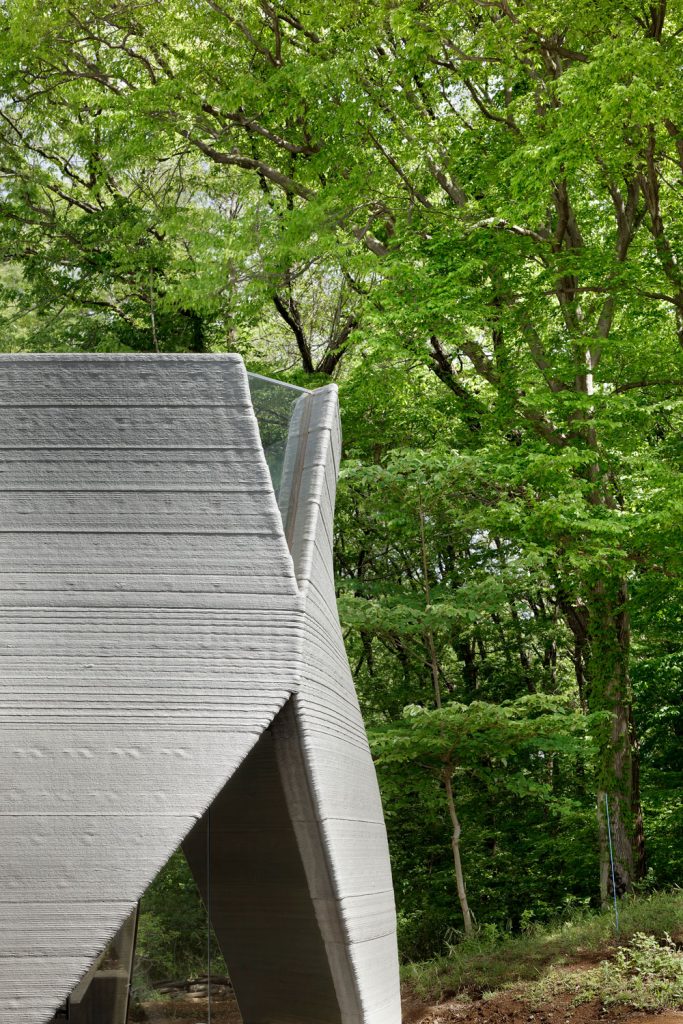
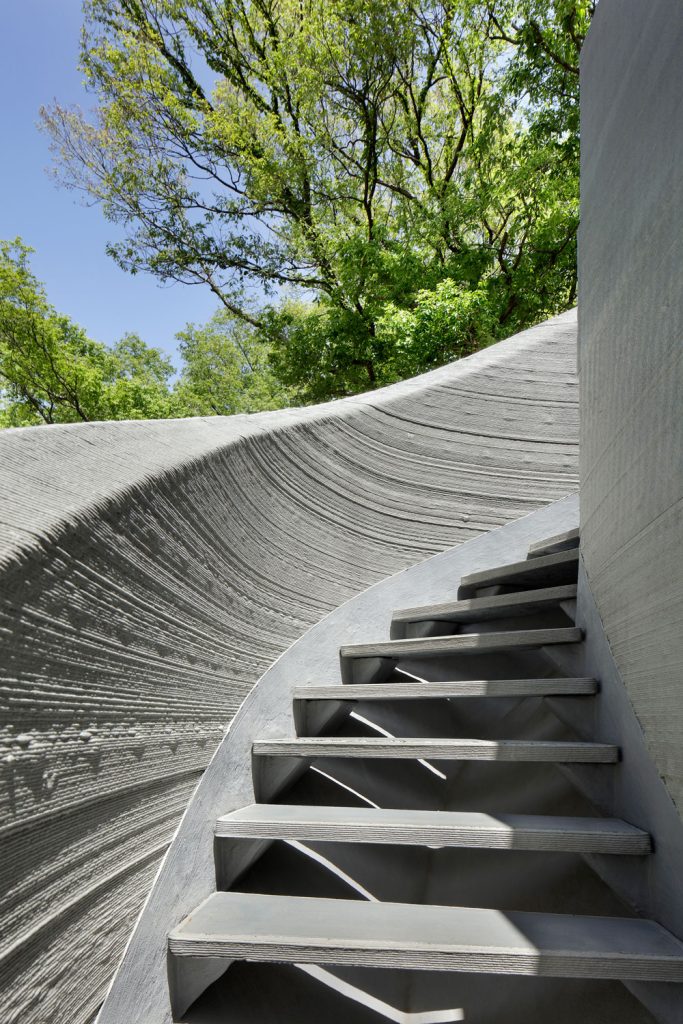
It is possible to achieve aesthetic and spatial properties while saving material.
A robotic printer installed on site was used to print the formwork for the mortar directly onto the foundations. The roof-slab formwork was instead printed as a precast element at a nearby facility, then placed on top of the walls and capped with SLIM-Crete®, creating a shell structure. The 3D printer then was used to complete the parapet on the deck. This demonstrated the feasibility of printing a building with multiple floors.
3dpod retains its warmth and tactile appeal despite the fact that it is a result of advanced digital fabrication. This is due to the unique texture emerging from on-site construction methods, which are reminiscent of craftsmen’s handiwork and grant the building an appealing roughness and primitive aura.
Construction sites can benefit from architectural 3D-printing by reducing labor requirements, accelerating construction times through automation, as well as lowering CO2 emissions due to reduced transport of materials. Obayashi will advance 3D printing for the AEC sector, addressing the shortage of skilled labor and the construction problems in remote regions, while also promoting building material diversification and localized construction.

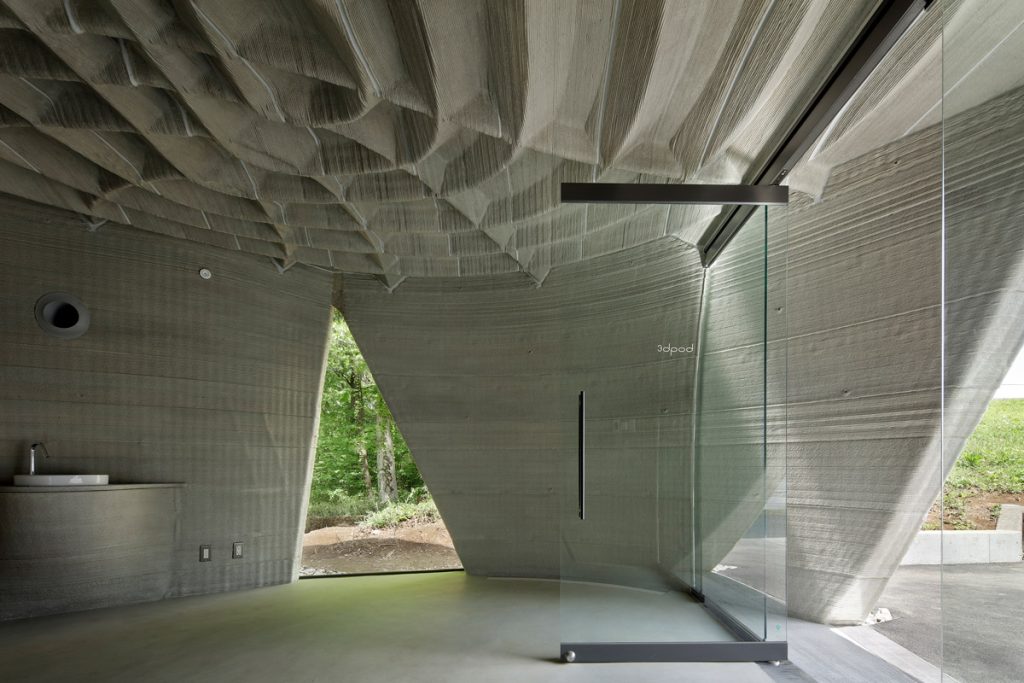
Project Info
Name of Project: 3dpod
Project Location Kiyose (Tokyo), Japan
Architecture Firm: Obayashi
ArchitectObayashi Corporation Architects and Engineers
CityTokyo
CountryJapan
PhotographerSatoshi and Obayashi

